Brivo Systems A206 Access Control System User Manual Brivo ACS Installation Guide 7 27 01
Brivo Systems, Inc. Access Control System Brivo ACS Installation Guide 7 27 01
Exhibit D Users Manual per 2 1033 c3

Brivo ACS Installation Manual Version 1.01
© Brivo Systems, Inc. 2001. All rights reserved. Page 1
DRAFT
Brivo ACS Installation Guide
August 2001
NOTICE: This equipment has been tested and found to comply with the limits for a Class B digital device,
pursuant to part 15 of the FCC Rules. These limits are designed to provide reasonable protection against
harmful interference in a residential installation or when the equipment is operated in a commercial
environment. This equipment generates, uses and can radiate radio frequency energy and, if not installed
and used in accordance with the instruction manual, may cause harmful interference to radio
communications. However, there is no guarantee that interference will not occur in a particular
installation. If this equipment does cause harmful interference to radio or television reception, wich can be
determined by turning the equipment off and on, the user is encouraged to try to correct the interference
by one or more of the following measures:
- Reorient or relocate the receiving antennae.
- Increase the separation between the equipment and receiver.
- Connect the equipment into an outlet on a circuit different from that to which the receiver is
connected.
- Consult the dealer or an experienced radio/TV technician for help.
Information in this document is subject to change without notice and does not represent a commitment on
the part of Brivo Systems, Inc.. For the most up-to-date information, visit www.brivo.com and click Help.
2001 Brivo Systems Inc. All rights reserved.
Brivo™ is a trademark of
Brivo Systems, Inc.
Brivo Systems, Inc.
1925 North Lynn St.• Suite 500
Arlington VA, 22209

Brivo ACS Installation Manual Version 1.01
© Brivo Systems, Inc. 2001. All rights reserved. Page 2
Brivo™ ACS Installation Guide
Introduction
Access Control is the control through electronic methods over entry to any area that
can be secured with a lock and key. Only individuals who are authorized will be
granted entry at authorized times. Control of who is allowed to come and go is easily
maintained through a central administration panel.
The common key is the weakness of the lock and key system. The key is a readily
duplicated piece of metal that gives anyone who holds it access to area. With the
Brivo™ Access Control System (ACS), the weakness of the lock and key system is
overcome through the use of five-digit PIN codes, called “keycodes.” The keycodes
are entered by authorized individuals at the Brivo keypad and the individuals are then
granted access to the secure area. If a keycode is compromised, the account
administrator can disable it immediately and assign a new code to the individual.
An additional benefit of access control is access data archiving capability. The Brivo
ACS provides real-time visibility of keycode activity and maintains a record of all
entries to an area. This record is provided to the account holder quarterly and
accessible to authorized personnel at the Brivo ACS website until archived.
The Brivo ACS Installation Guide provides all information necessary for installation of
the Brivo ACS-2000 and ACS-2100 keypad and control panel.
™

Brivo ACS Installation Manual Version 1.01
© Brivo Systems, Inc. 2001. All rights reserved. Page 3
Parts List
Box 1
• ACS Control Panel
• Magnetic Door Sensor
Box 2
• Keypad
• Cutout template for flush mounting
• Snap-on keypad faceplate
• Antenna kit (boxed separately within this box)
• Power Supply (boxed separately within this box)
• Installation Worksheet
Supplied by Installer
• Five CAT 5 cables, maximum length of 20 feet
• Ten CAT 5 connector plugs to terminate onto cables
• Necessary conduit and conduit fittings if desired, maximum size ¾”
• Ten mounting screws (#6 wood screws or Molly bolts)
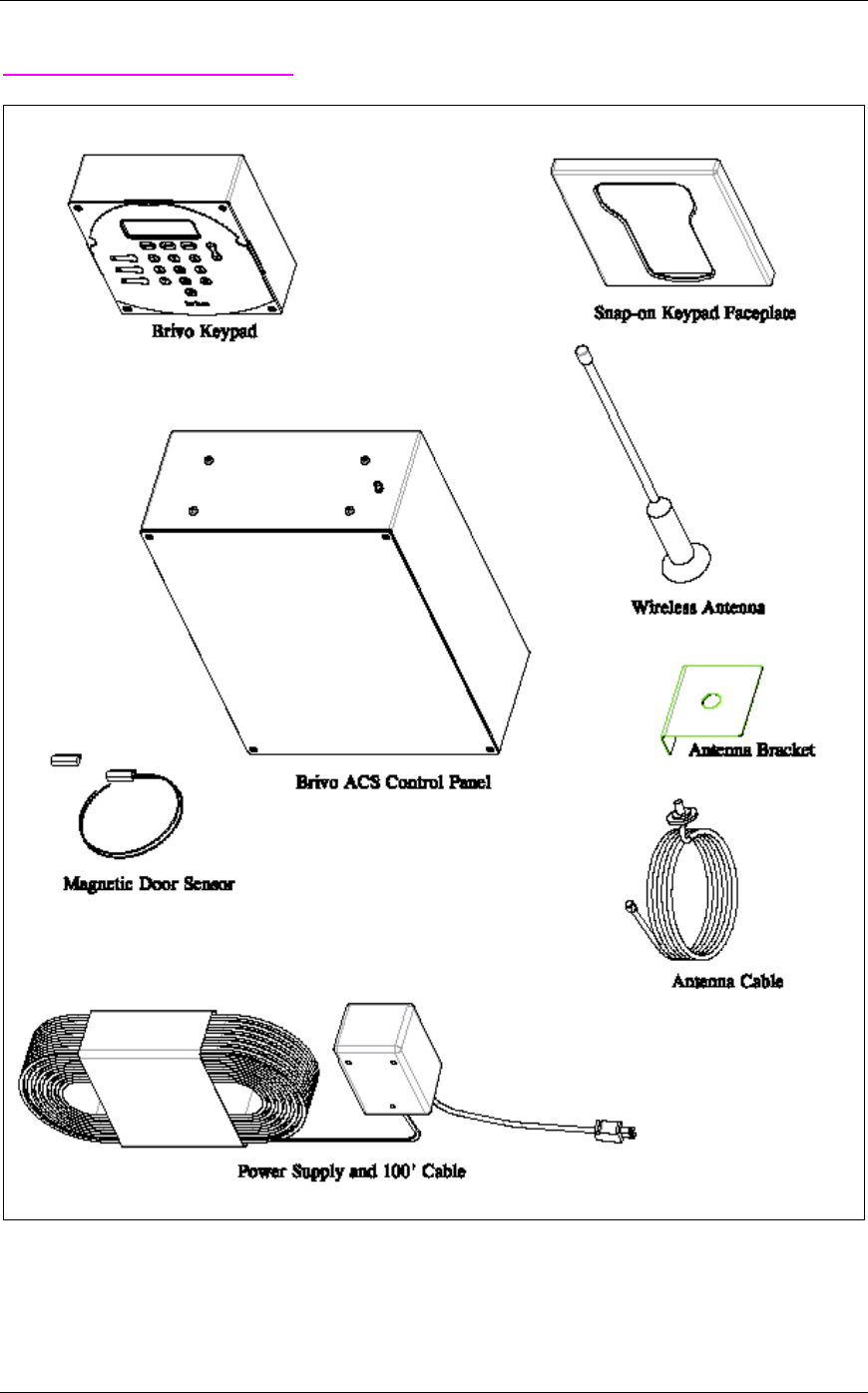
Brivo ACS Installation Manual Version 1.01
© Brivo Systems, Inc. 2001. All rights reserved. Page 4
Diagram: Components List

Brivo ACS Installation Manual Version 1.01
© Brivo Systems, Inc. 2001. All rights reserved. Page 5
SAFTEY WARNINGS
Fire Safety Notice: Never connect the Brivo keypad or locks to doors without
first consulting the applicable fire code. You must consult with and get approval
of, local fire officials before installing locks or devices on any doors that may be
fire exits. Use of egress push buttons may not be legal. Single action exit may be
required. Always obtain proper permits and approvals in writing before installing
equipment.
FCC RF Exposure Notice: To meet the FCC RF exposure requirement for
mobile transmitter end products using the Austin 200160 500C, 0 dBd antenna,
ensure that the antenna is at least 20cm (8”) away from the user or nearby
persons when transmitting.
Notice: Contents of this document are subject to change without notice.
Notice: This document and the data herein shall not be duplicated, used or
disclosed to others for procurement or manufacturing, except as authorized with
the written permission of Brivo Systems, Inc. The information contained within
this document or within the product itself is considered the exclusive property and
trade secrets of Brivo Systems, Inc. All information in this document or within the
hardware and software product themselves is protected by the copyright and/or
other intellectual property laws of the United States.
Notice: Any use of this product is subject to the Brivo Systems Services
Agreement. Please request a copy from Brivo Systems, Inc. and review this
agreement carefully.

Brivo ACS Installation Manual Version 1.01
© Brivo Systems, Inc. 2001. All rights reserved. Page 6
Installation Steps
General Site Survey
The Brivo Access Control System has two major components to be installed --
the keypad and the ACS Control Panel. Both components work in concert with
one another and require cabling between them. A general site survey should
occur before any installation work to identify suitable mounting essentials and
potential hazards.
Ideal conditions to look for include:
1) A stud near the keypad location on the wall. Ideally, the keypad casing
should have two screws fastened to a stud. The keypad can be mounted
using Molly bolts if no stud is available.
2) A suitable mounting area for the ACS Control Panel within 15 feet of the
keypad. The control panel can be mounted on a wall or in the ceiling. Like
the keypad, the control panel ideally should be fastened to a stud.
3) A suitable place to mount the ACS Antenna within 15 feet of the ACS
Control Panel mounting area. The antenna must be mounted either right-
side up or upside down, it should not be mounted on its side and should
be at least three feet away from human contact.
4) A 120 V power outlet within 100 feet of the control panel mounting area.
The ACS Control Panel requires electrical power.
5) The control panel should be located within 50 feet of the door latch.

Brivo ACS Installation Manual Version 1.01
© Brivo Systems, Inc. 2001. All rights reserved. Page 7
Pre-Installation
After location has been determined:
1) Select length of CAT-5 cable required
2) Mark both ends of each cable with A, B, C, D, or E
3) Route cables (through a conduit or individually) through the walls in
desired manner. Note that the cables eventually will be fed through
knocked out holes in the keypad casing and the control panel.
Do not terminate the cables with the RJ45 plugs at this time!
Keypad
Flush (Recessed) Installation vs. Surface Installation
The decision to mount on the surface or flush must occur before you determine
which of the four holes should be knocked out within the keypad casing. (See
Step 2 in “Mounting the Keypad” section). The keypad should be mounted in a
location no more than 48 inches from the floor.
The keypad can be installed flush against the wall by cutting into the wall and
inserting a portion of the keypad casing behind the surface. This will give a more
streamlined appearance of the keypad on the wall.
The keypad can also be installed on the surface of the wall, which requires
minimal cutting into the wall. The keypad can be installed on the surface of the
wall with #6 wood screws if a stud is available or anchor (Molly) bolts if no stud is
used.

Brivo ACS Installation Manual Version 1.01
© Brivo Systems, Inc. 2001. All rights reserved. Page 8
Installation of the ACS Keypad
Mounting the Keypad – Flush Mount
1. After determining to go with the flush mount for the keypad, unscrew the
four surface screws on the front of keypad. The keypad casing will remain
open during the most of the mounting of the keypad.
2. Determine the location for mounting the keypad. The optimal location will
allow for the keypad casing to be mounted directly to a stud through either
the right or left side. Based on the location of the stud, knockout the 1”
hole on the opposite side or the hole on the bottom surface of the box, if
preferred for ease of cable routing.
3. Locate the supplied cutout template. Trace around the template in the
area of the wall on which you’d like to mount the keypad.
4. Cut around the marking through the wall to a depth of at least 2 ½”,
exposing the stud to which you will fasten the keypad casing.
5. Locate the five CAT5 cables and pull each through the knocked out hole in
the keypad casing. Use a ¾” conduit connector if required.
6. Mount the side of the keypad box to the stud, using two #6 woodscrews.
7. Terminate each cable with an RJ45 plug.
8. Connect the cables to the jacks on the jumper board located within the
keypad casing. (See diagram, Brivo keypad converter board). Cable “A”
should be plugged into jack “A”, etc.
9. Locate the lid of keypad casing. On the back of the lid, you will see the
back of the LCD display. Locate the cable that is connected to it and plug
it into the 16-position header on the keypad jumper board, designator J20.
(See diagram, Brivo keypad converter board, and diagram, Keypad casing
lid)
10. Locate the fiber optic tail on the lid of the keypad casing. Plug the cable
into the LED in the D3 position on the keypad jumper board. (See
diagram, Brivo keypad converter board, and diagram, Keypad casing lid)
11. Locate the ribbon cable on the lid on the keypad. Plug it into the 11-
position connector and position J23 on the keypad jumper board. (See

Brivo ACS Installation Manual Version 1.01
© Brivo Systems, Inc. 2001. All rights reserved. Page 9
diagram, Brivo keypad converter board, and diagram, Keypad casing lid).
After inserting the ribbon cable in J23, snap down the two-piece connector
to lock in the cable.
12. Screw the lid onto the keypad box with the four flat-head #6 screws that
are provided.
13. The Brivo keypad is now fully assembled except for the attachable keypad
faceplate. DO NOT SNAP THE FACEPLATE ON UNTIL ALL
FUNCTIONAL TESTING IS COMPLETE.
Mounting the Keypad – Surface Mount
1. After determining to go with the surface mount for the keypad, unscrew
the four surface screws on the front of keypad. The keypad casing will
remain open during the most of the mounting of the keypad.
2. The cables will exit the keypad casing in the back of the box. Knockout the
conduit hole in the back of the keypad casing.
3. Determine a suitable place on the wall to surface mount the keypad. Cut
out a 1.5” diameter hole in the wall at the approximate location of the
conduit hole on the back of the keypad casing. Pull the cables through the
conduit hole, use a ¾” conduit connector if necessary.
4. Mount the keypad casing with four #6 screws, using the countersunk
holes. It is ideal to fasten the keypad casing to a stud. If one is not
available for a surface mount, the keypad casing can be mounted with four
anchor (Molly) bolts.
5. Terminate each cable with an RJ45 plug.
6. Connect the cables to the jacks on the jumper board located within the
keypad casing. (Refer to diagram, Brivo keypad converter board). Cable
“A” should be plugged into jack “A”, etc.
7. Locate the lid of keypad casing. On the back of the lid, you will see the
back of the LCD display. Locate the cable that is connected to it and plug
it into the 16-position header on the keypad jumper board, designator J20.
(See diagram, Brivo keypad converter board, and diagram, Keypad casing
lid).
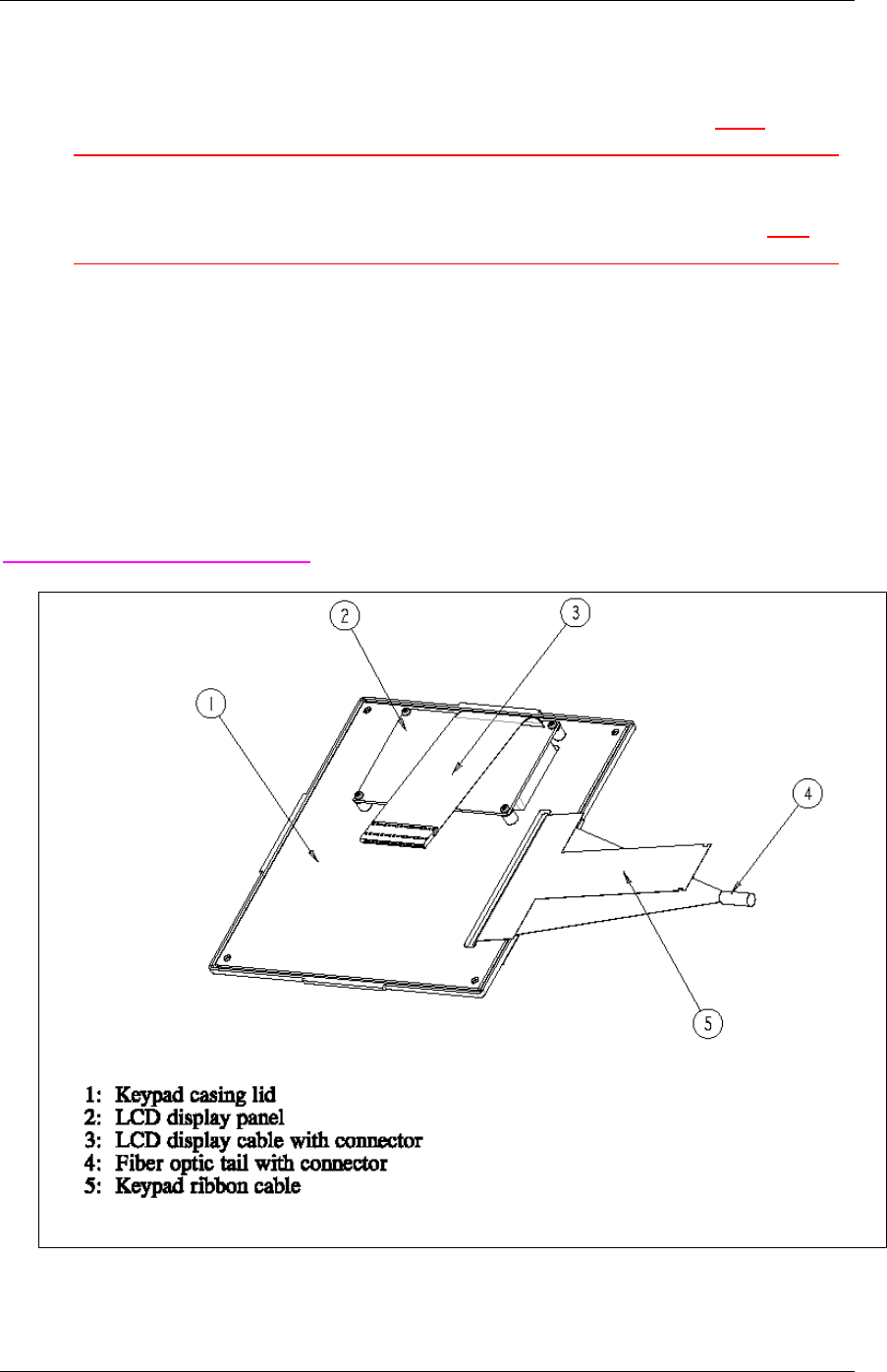
Brivo ACS Installation Manual Version 1.01
© Brivo Systems, Inc. 2001. All rights reserved. Page 10
8. Locate the fiber optic tail on the lid of the keypad casing. Plug the cable
into the LED in the D3 position on the keypad jumper board. (See
diagram, Brivo keypad converter board, and diagram, Keypad casing lid).
9. Locate the ribbon cable on the lid on the keypad. Plug it into the 11-
position connector and position J23 on the keypad jumper board. (See
diagram, Brivo keypad converter board, and diagram, Keypad casing lid).
After inserting the ribbon cable in J23, snap down the two-piece connector
to lock in the cable.
10. Screw the lid onto the keypad box with the four flat-head #6 screws that
are provided.
11. The Brivo keypad is now fully assembled except for the attachable keypad
faceplate. DO NOT SNAP THE FACEPLATE ON UNTIL ALL
FUNCTIONAL TESTING IS COMPLETE.
Diagram: Keypad Casing Lid
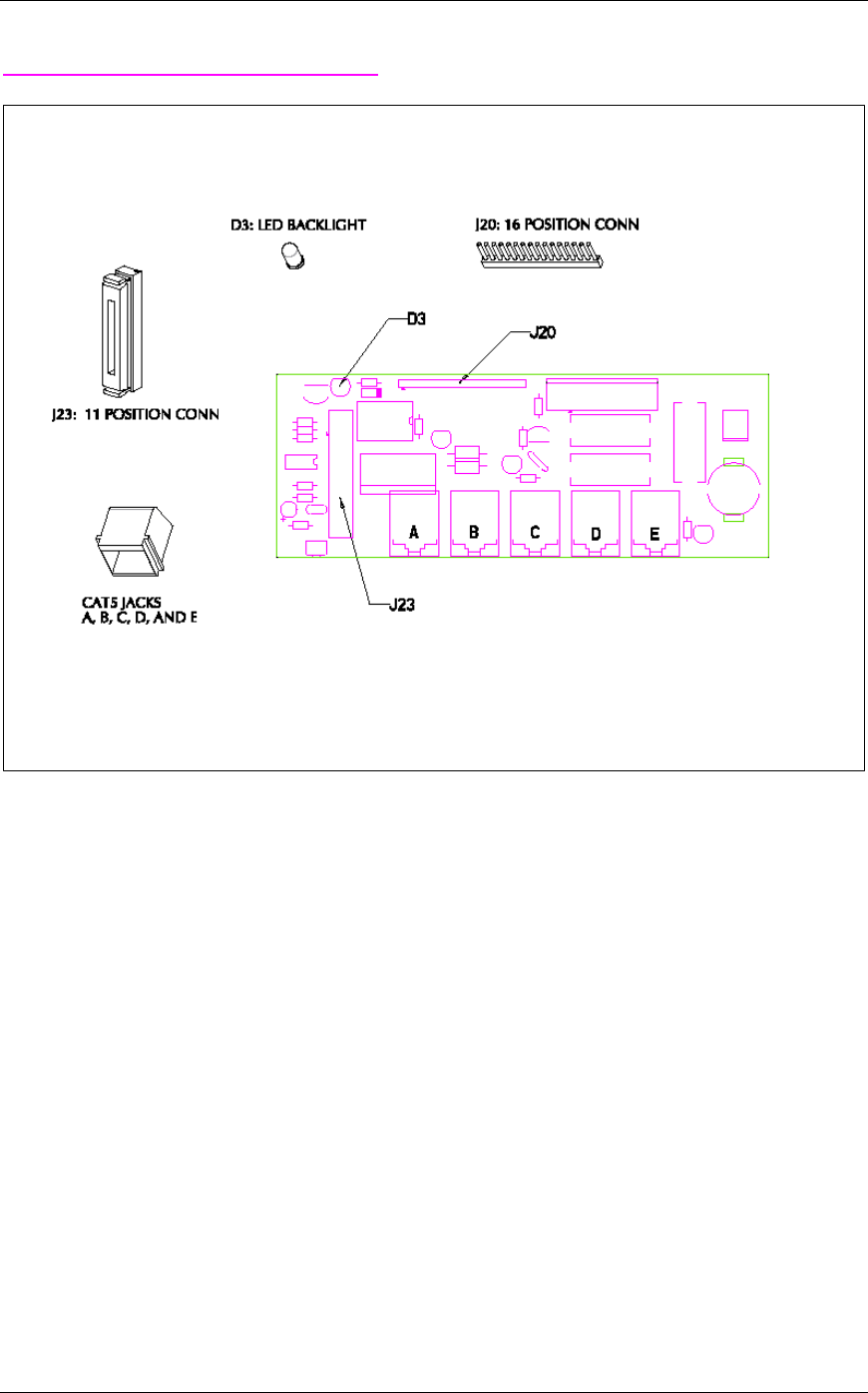
Brivo ACS Installation Manual Version 1.01
© Brivo Systems, Inc. 2001. All rights reserved. Page 11
Diagram: Keypad Converter Board

Brivo ACS Installation Manual Version 1.01
© Brivo Systems, Inc. 2001. All rights reserved. Page 12
Installation of ACS Control Panel
Mounting the Control Panel
1. Locate the control panel. Unscrew the four corner screws and remove the
lid of the control panel casing.
2. Note the location where you want to mount the control panel. The control
panel can be mounted on a wall or in the ceiling.
3. Locate the five CAT5 cables and pull them through the larger hole in the
bottom of the control panel casing. Use a ¾’’ conduit connector on the
larger hole, if necessary.
4. Mount the control panel casing to the wall, using four #6 screws. It is ideal
to fasten the control box to a stud. If one is not available, the control box
can be mounted with four anchor (Molly) bolts. If mounting in the ceiling,
locate a stud and fasten the control panel casing to it.
5. After mounting the control panel casing to the wall or in the ceiling,
terminate the cables to RJ45 plugs and plug them into the control panel
jumper board in their proper positions, cable “A” plugs into jack “A”, etc.
(See diagram, Control panel converter board). Do not replace the lid of the
control panel casing yet.
6. Locate the magnetic switch and install it in a convenient place over the
door, following the manufacturer’s instructions. The magnet (piece with no
wires) should be attached to the door and the switch (contains two wires)
to the doorframe above the door. Screws are provided to securely fasten
both pieces of the switch.
7. Attach two, 26-22 gauge wires (provided by installer) to the magnetic door
sensor and route them to the Control Panel. Pull the two wires into the
control panel casing through the smaller hole. The wires will be used to
sense the door open/close status. (See diagram, Control panel converter
board).
8. Locate the black and yellow wires inside the control panel jumper board.
Use an appropriate connector to connect the wires from the magnetic
switch to the black and yellow wires. (See diagram, Control panel
converter board).
9. Locate the orange, blue and green wires inside the control panel jumper
board. The three contacts are connected to a SPST relay.
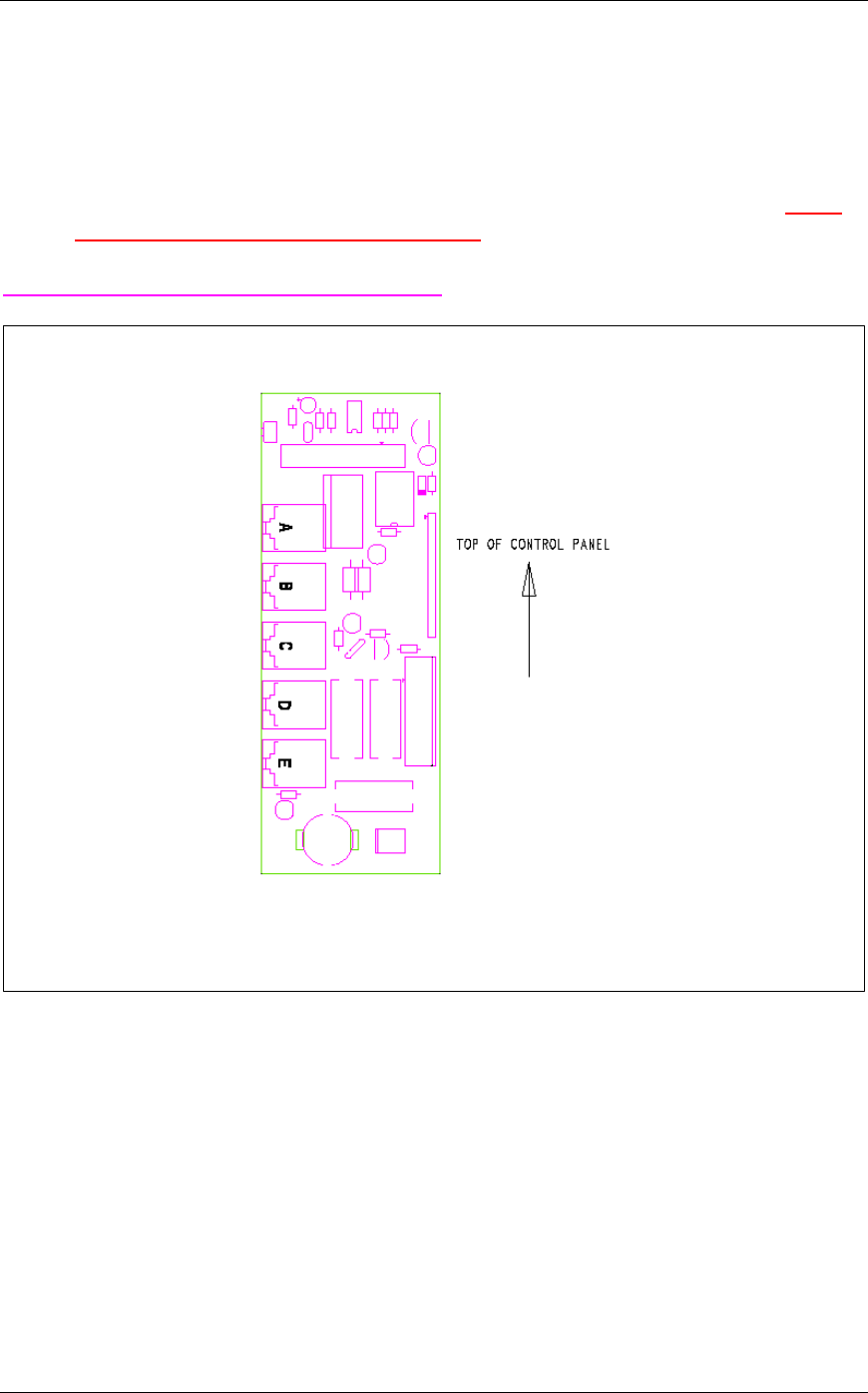
Brivo ACS Installation Manual Version 1.01
© Brivo Systems, Inc. 2001. All rights reserved. Page 13
The blue wire is connected to the common contact, orange wire is
connected to the normally open contact and green wire is connected to
the normally closed contact.
10. Pull the two wires into the control panel casing through the smaller hole.
The wires will be used to control the door latch via the relay output. (See
diagram, Control panel jumper board).
Diagram: Control Panel Converter Board

Brivo ACS Installation Manual Version 1.01
© Brivo Systems, Inc. 2001. All rights reserved. Page 14
Installation of the ACS Power Supply
Mounting the Power Supply
1. Locate the power supply kit. Note that the power supply will be plugged
into a 120 volt AC socket. Mount the power supply to the wall an
appropriate distance from the outlet, using anchor bolts.
2. There will be 100 feet of cable. WARNING! Do not plug the power supply
into the AC socket yet.
3. Dress the cable up the wall, route it to the control panel.
4. Pull the power cable through the smaller hole in the bottom of the control
panel. Properly terminate the cable with the supplied terminals and install
the 3-position connector housing onto the end of the cable.
5. Plug the terminated cable into the power connector on the control panel
main board in the position designated J5. (See diagram, Control Panel
Main PC Board).
6. Plug the power supply cable into the AC socket.
7. Locate the SW4 switch on the main control panel board and switch it “on”.
If AC power is present the green LED marked AC/D4 located near the
RJ45 jacks on the jumper board will be on. (See diagram, Control Panel
Main PC Board).
8. Wait 5 minutes to allow the super capacitors to become fully charged.

Brivo ACS Installation Manual Version 1.01
© Brivo Systems, Inc. 2001. All rights reserved. Page 15
Installation of the ACS Antenna
Mounting the Antenna and Performing Functional
Testing
FCC RF Exposure Notice: To meet the FCC RF exposure requirement for
mobile transmitter end products using the Austin 200160 500C, 0 dBd antenna,
ensure that the antenna is at least 20cm (8”) away from the user or nearby
persons when transmitting.
1. Locate the antenna kit. In it you will find the antenna, the antenna
mounting kit, and the mounting bracket.
2. Take the antenna and the mounting kit and screw them together through
the 3/4'” hole in the antenna mounting bracket.
3. There is a jack originating on the top of the control panel casing. Plug the
antenna cable into this jack.
4. Now you are ready to perform functional testing of the system. First, open
the door and prop it open.
5. Return to the control panel and depress the “Reset” button, which is
designated switch SW3. (See diagram, Control Panel Main PC Board).
6. Return to the keypad user interface and close the door. Press enter to
start functional testing. The first screen is a character test. Verify all
characters appear normal and press the down arrow to advance to the
next screen.
7. The second screen is a pixel test. Verify that all the pixels rectangles are
complete and press the down arrow to advance to the next screen.
8. The third screen is a keypad test. Press each button on the keypad and
verify that the corresponding character is displayed. After every key is
pressed, press the down arrow to advance to the next screen.
9. The fourth screen is the door sensor/ door open test. Press enter to test
the door open mechanism and open the door. Verify the door open/close
status on the screen as open. Close the door and verify the door
open/close status as closed. Press enter to re-open the door and prop it
open. Press the down arrow to advance to the next screen.
10. The fifth screen is the sensor test. Verify that primary power is available.
Press the down arrow to advance to the next screen.

Brivo ACS Installation Manual Version 1.01
© Brivo Systems, Inc. 2001. All rights reserved. Page 16
11. The sixth screen is the light sensor test. Press the up arrow, then the
down arrow to advance to the next screen.
12. The seventh screen is the IR sensor test. Press the up arrow, then the
down arrow to advance to the next screen.
13. The eighth screen provides the antenna signal strength. With the antenna
oriented right side up or upside down, not on its side, find the best signal
strength as indicated on the keypad display.
NOTE: -50dbm is better than –100dbm. A reading of –256dbm indicates
no signal is reaching the system.
14. Once you’ve found a suitable mounting place for the with the best signal
strength, mount the antenna to the wall using two #6 screws. Now replace
the front of the control panel using the four corner screws. Press the down
arrow to advance to the next screen.
15. The ninth screen contains the door id# and ESN number. Record the door
id # on the installation worksheet. Press the down arrow to complete the
functional testing.
NOTE: The BRN screen will now be displayed until the device is
registered. Additional antenna adjustments can be made at this point by
pressing enter to update the current signal strength.
16. Snap the keypad faceplate on the keypad unit.
17. Locate the Installation Worksheet. Complete the checklist on the
worksheet, paying close attention to copying the Door ID number
correctly, and deliver it to the customer.
18. Alert the customer that they can now register the door using the door ID #
provided on the Installation Worksheet.
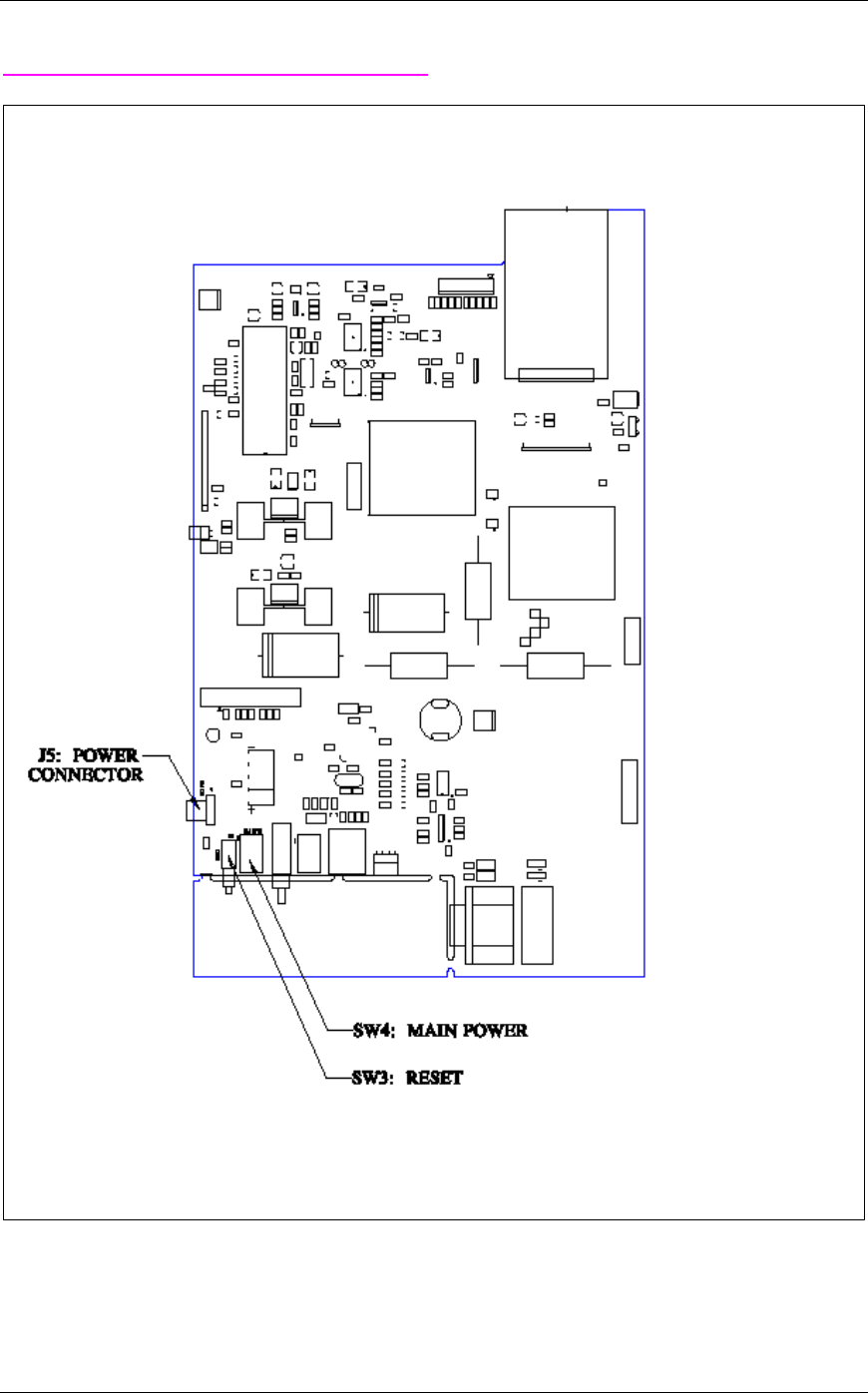
Brivo ACS Installation Manual Version 1.01
© Brivo Systems, Inc. 2001. All rights reserved. Page 17
Diagram: Control Panel Main PC Board

Brivo ACS Installation Manual Version 1.01
© Brivo Systems, Inc. 2001. All rights reserved. Page 18
Product Specifications
Models ACS-2000 & ACS-2100
Size
Keypad: 7.5” x 7.5” x 0.75” (flush mounted)
7.5” x 7.5” x 2.75” (surface mounted)
Control and Communication Panel: 14.25” x 10.75” x 5.25”
Electrical
Transformer Input: 120VAC, 60Hz, 1 Amp
Transformer Output: 12VAC, 44 Watts
Operating Temperature: –20 to +70 degrees Celcius
Keypad: Membrane with backlit LCD display
Output Relay Format: NO, NC, Common contact set
Output Relay Ratings: 0.4Amp, 125VAC, 2Amp, 30VDC
Battery Backup: 6 “D Cell” Alkaline batteries (included)
Modem: Rim R902M
Cable Types
Keypad to Control Panel: Cat5 or Cat5E (5 cables)
Door Closed Monitor Switch: 2 conductor bell wire
Door Latch / Lock: See Latch / Lock Manufacturer Data
Cable Lengths
Keypad to Control Panel: 20 feet maximum
Control Panel to Door Closed Switch: 60 feet maximum
Control Panel to Latch / Lock: See Latch / Lock Manufacturer Data
Antenna Coax Cable (supplied): 15 feet maximum
Other
Clock: Real-time clock
Color / Finish: Keypad Bezel: Pantone, Dark Grey 433C /
Suede
Keypad Box: Pantone Black 2C / Suede
Control Panel: Pantone Dark Grey 433C / Suede
Certifications
FCC and UL certifications are pending.
Specifications are subject to change without notice. Brivo reserves the right to discontinue any product without notice.
Brivo Systems, Inc. • 1925 North Lynn Street, Suite 500 • Arlington, VA 22209 • 866.MY.BRIVO • www.brivo.com
2001 Brivo Systems, Inc.